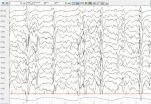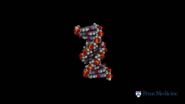(Press-News.org) Many of the choices we make are informed by experiences we've had in the past. But occasionally we're better off abandoning those lessons and exploring a new situation unfettered by past experiences. Scientists at the Howard Hughes Medical Institute's Janelia Research Campus have shown that the brain can temporarily disconnect information about past experience from decision-making circuits, thereby triggering random behavior.
In the study, rats playing a game for a food reward usually acted strategically, but switched to random behavior when they confronted a particularly unpredictable and hard-to-beat competitor. The animals sometimes got stuck in a random-behavior mode, but the researchers, led by Janelia lab head Alla Karpova and postdoctoral fellow Gowan Tervo, found that they could restore normal behavior by manipulating activity in a specific region of the brain. Because the behavior of animals stuck in this random mode bears some resemblance to that of patients affected by a psychological condition called learned helplessness, the findings may help explain that condition and suggest strategies for treating it. Karpova, Tervo and their colleagues published their findings in the September 25, 2012, issue of the journal Cell.
The brain excels at integrating information from past experiences to guide decision-making in new situations. But in certain circumstances, random behavior may be preferable. An animal might have the best chance of avoiding a predator if it moves unpredictably, for example. And in a new environment, unrestricted exploration might make more sense than relying on an internal model developed elsewhere. So scientists have long speculated that the brain may have a way to switch off the influence of past experiences so that behavior can proceed randomly, Karpova says. But others disagreed. "They argue that it's inefficient, and that it would be at odds with what some people call one of the most central operating principles of the brain – to use our past experience and knowledge to optimize behavioral choices," she notes.
Karpova and her colleagues wanted to see if they could create a situation that would force animals to switch into this random mode of behavior. "We tried to create a setting that would push the need to create behavioral variability and unpredictability to its extreme," she says. They did this by placing rats in a competitive setting in which a computer-simulated competitor determined which of two holes in a wall would provide a sugary reward. The virtual competitor, whose sophistication was varied by the experimenters, analyzed the rats' behavior to predict their future choices.
"We thought if we came up with very sophisticated competitors, then the animals would eventually be unable to figure out how to outcompete them, and be forced to either give up or switch into this [random] mode, if such a mode exists," Karpova says. And that's exactly what happened: When faced with a weak competitor, the animals made strategic choices based on the outcomes of previous trials. But when a sophisticated competitor made strong predictions, the rats ignored past experience and made random selections in search of a reward.
Now that they had evidence that the brain could generate both strategic and random behavior, Karpova and her colleagues wanted to know how it switched between modes. Since that switch determines whether or not an animal's internal model of the world influences its behavior, the scientists suspected it might involve a brain region called the anterior cingulate cortex, where that internal model is likely encoded.
They found that they could cause animals to switch between random and strategic behavior by manipulating the level of a stress hormone called norepinephrine in the anterior cingulate cortex. Increasing norepinephrine in the region activated random behavior and suppressed the strategic mode. Inhibiting release of the hormone had the opposite effect.
Karpova's team observed that animals in their experiments sometimes continued to behave randomly, even when such behavior was no longer advantageous. "If all they've experienced is this really sophisticated competitor for several sessions that thwarts their attempts at strategic, model-based counter-prediction, they go into this [random mode], and they can get stuck in it for quite some time after that competitor is gone," she says. This, she says, resembles the condition of learned helplessness, in which strategic decision-making is impaired following an experience in which a person finds they are unable to control their environment.
The scientists could release the animals from this "stuck" state by suppressing the release of norepinephrine in the anterior cingulate cortex. "Just by manipulating a single neuromodulatory input into one brain area, you can dramatically enhance the strategic mode. The effect is strong enough to rescue animals out of the random mode and successfully transform them into strategic decision makers," Karpova says. "We think this might shed light on what has gone wrong in conditions such as learned helplessness, and possibly how we can help alleviate them."
Karpova says that now that her team has uncovered a mechanism that switches the brain between random and strategic behavior, she would like to understand how those behaviors are controlled in more natural settings. "We normally try to use all of our knowledge to think strategically, but sometimes we still need to explore," she says. In most cases, that probably means brief bouts of random behavior during times when we are uncertain that past experience is relevant, followed by a return to more strategic behavior – a more subtle balance that Karpova intends to investigate at the level of changes in activity in individual neural circuits.
INFORMATION:
Strategic or random? How the brain chooses
2014-09-25
ELSE PRESS RELEASES FROM THIS DATE:
New protein players found in key disease-related metabolic pathway
2014-09-25
CAMBRIDGE, Mass. (September 25, 2014) – To coordinate their size and growth with current environmental conditions, cells rely on the mechanistic target of rapamycin complex 1 (mTORC1) pathway, which senses cellular stresses, growth factors, and the availability of nutrients, such as amino acids and glucose.
For years, Whitehead Institute Member David Sabatini and his lab have been teasing apart the numerous proteins involved in this vital metabolic pathway, in part because mTORC1 function is known to be deregulated in a variety of diseases, including diabetes, epilepsy, ...
Large study pinpoints synapse genes with major roles in severe childhood epilepsies
2014-09-25
An international research team has identified gene mutations causing severe, difficult-to-treat forms of childhood epilepsy. Many of the mutations disrupt functioning in the synapse, the highly dynamic junction at which nerve cells communicate with one another.
"This research represents a paradigm shift in epilepsy research, giving us a new target on which to focus treatment strategies," said pediatric neurologist Dennis Dlugos, M.D., director of the Pediatric Regional Epilepsy Program at The Children's Hospital of Philadelphia, and a study co-author. "There is tremendous ...
Protein controlling gut's protective force field identified
2014-09-25
Scientists have identified a protein in the human intestine that helps to protect against attack from opportunistic bacteria that strike when our defences are down. The protein receptor is activated during illness, producing a force field on the gut's surface made of a sugary substance that encourages the growth of protective bacteria.
Scientists deleted the IL-22RA1 gene that produces the receptor protein from the mouse genome. In the absence of this gene, which is associated with inflammatory bowel disease (IBD) in humans, the mice were found to be more susceptible ...
NYU Langone scientists identify key factor that maintains stem cell identity
2014-09-25
NEW YORK, September 25, 2014— A protein implicated in several cancers appears to play a pivotal role in keeping stem cells in an immature "pluripotent" state, according to a new study by NYU Langone Medical Center scientists. The study is published online today in Cell Reports.
Stem cells are the perpetual adolescents of the cellular world, uncommitted to any cell fate. In principle, they can be programmed to differentiate into any mature cell type, holding the promise of regenerating tissues and organs. A fuller understanding of their biology, however, is needed. ...
Surprising diversity of antibody family provides clues for HIV vaccine design
2014-09-25
LA JOLLA, CA—September 25, 2014—Scientists at The Scripps Research Institute (TSRI) have described how a single family of antibodies that broadly neutralizes different strains of HIV has evolved remarkably diverse structures to attack a vulnerable site on the virus. The findings provide clues for the design of a future HIV vaccine.
"In a sense, this antibody family takes more than one shot on goal in order to hit divergent forms of HIV," said Ian A. Wilson, the Hansen Professor of Structural Biology and member of the Skaggs Institute for Chemical Biology at TSRI.
"The ...
New genes identified with key role in the development of severe childhood epilepsies
2014-09-25
In the largest collaborative study so far, an international team of researchers, including scientists from VIB and Antwerp University identified novel causes for severe childhood epilepsies. The researchers analyzed the genetic information of 356 patients and their parents. In their analysis, the research teams looked for genes that had acquired new mutations in the children with severe epilepsies when compared to the DNA of the parents. In total, they identified 429 new mutations and in 12% of children, these mutations were considered unequivocally causative for the patient's ...
How the ends of chromosomes are maintained for cancer cell immortality
2014-09-25
VIDEO:
The perpetual proliferation of cancer cells requires a means to maintain telomere length. Alternative lengthening of telomeres (ALT) is a poorly understood mechanism of telomere maintenance that is utilized by...
Click here for more information.
PHILADELPHIA – Maintaining the ends of chromosomes, called telomeres, is a requisite feature of cells that are able to continuously divide and also a hallmark of human cancer. "Telomeres are much like the plastic cap on the ends ...
USC researchers discover dual purpose of cancer drug in regulating expression of genes
2014-09-25
LOS ANGELES — Keck Medicine of USC scientists have discovered new clues about a drug instrumental in treating a certain blood cancer that may provide important targets for researchers searching for cures.
The team investigated whether demethylation of gene bodies induced by the drug 5-Aza-CdR (decitabine), which is used to treat pre-leukemia, could alter gene expression and possibly be a therapeutic target in cancer.
"When we put the drug in cancer cells, we found it not only reactivated some tumor suppressor genes, but it down-regulated the overexpressed oncogene ...
NASA-NOAA's Suomi NPP satellite sees Tropical Storm Kammuri coming together
2014-09-25
When NASA-NOAA Suomi NPP satellite passed over Tropical Storm Kammuri the VIIRS instrument aboard took a visible picture of the storm that showed bands of thunderstorms wrapped around its center. The storm appears to be coming together as circulation improves and bands of thunderstorms have been wrapping into the low-level center of circulation.
NASA-NOAA's Suomi NPP satellite passed over Tropical Storm Kammuri on Sept. 25 at 03:13 UTC (Sept. 24 at 11:13 p.m. EDT) and the Visible Infrared Imaging Radiometer Suite (VIIRS) instrument aboard captured a visible picture of ...
Researchers engineer 'Cas9' animal models to study disease and inform drug discovery
2014-09-25
Cambridge, MA, September 25, 2014 — Researchers from the Broad Institute and Massachusetts Institute of Technology have created a new mouse model to simplify application of the CRISPR-Cas9 system for in vivo genome editing experiments. The researchers successfully used the new "Cas9 mouse" model to edit multiple genes in a variety of cell types, and to model lung adenocarcinoma, one of the most lethal human cancers. The mouse has already been made available to the scientific community and is being used by researchers at more than a dozen institutions. A paper describing ...




